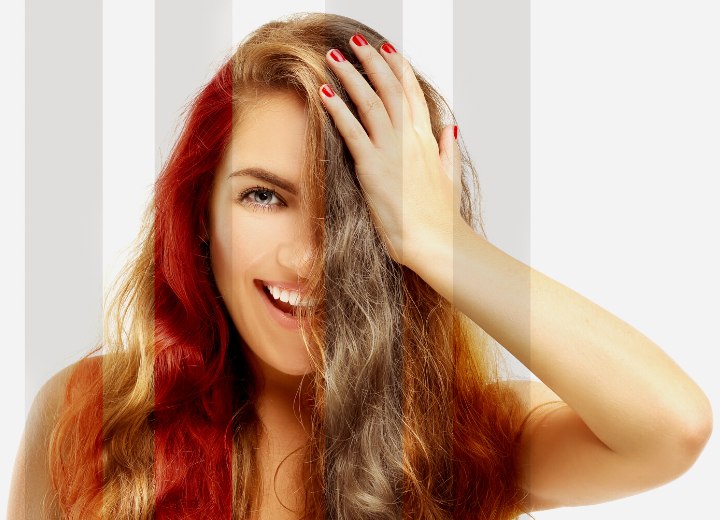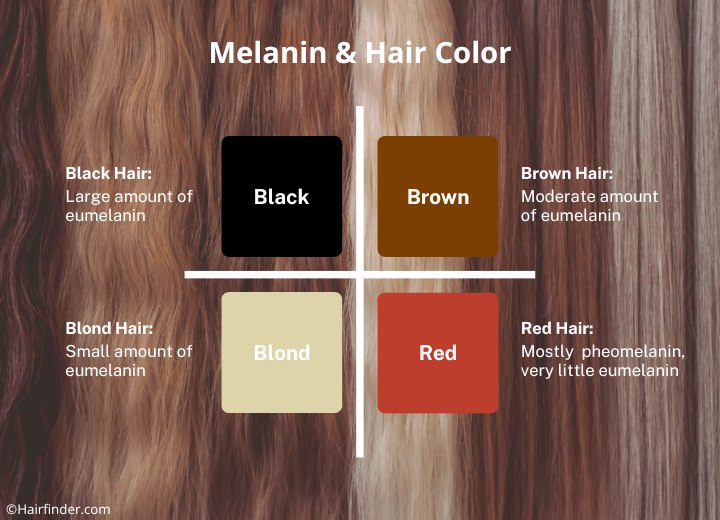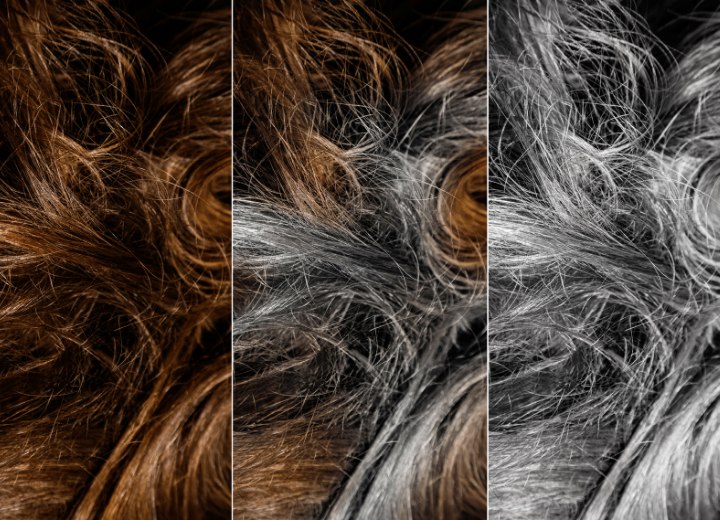Melanin and Hair Color

What is Melanin?
Melanin is a natural pigment produced by cells called melanocytes. There are three different forms of melanin found in humans: eumelanin, pheomelanin, and neuromelanin. Two of these types of melanin are responsible for giving color to our hair, skin, and eyes: eumelanin and pheomelanin. Neuromelanin is found in the brain and this pigment is not involved in skin or hair coloring.
Exposure to the sun can affect the production of melanin. When the skin is exposed to ultraviolet light, the melanocytes produce more melanin in an attempt to protect the skin from harm, by absorbing and transforming the ultraviolet light. This is why people often get a tan in the summer. In addition to genetics, hormones, and sun exposure, certain medications and medical conditions can also affect the production of melanin, thus impacting the hair color.

Eumelanin & Pheomelanin
Eumelanin is the most common form of melanin and it gives hair a brown or black color. This pigment is produced by the melanocytes in large quantities and it is the main pigment in people with darker skin and hair. Pheomelanin is a lighter pigment that gives hair and skin a reddish or yellowish hue. It is produced in smaller amounts by the melanocytes and is the main pigment in people with lighter skin and hair.
Thus, eumelanin is the brownish-black pigment and pheomelanin is the reddish-yellow pigment. The amount of each type of melanin, eumelanin and pheomelanin, present in hair determines its color. People with more eumelanin and less pheomelanin have darker hair, while people with more pheomelanin and less eumelanin have lighter hair. The balance of eumelanin and pheomelanin in hair can vary greatly among different people.

Melanin also plays a role in how and when hair turns gray. As we age, the number of functioning melanocytes decreases, and the remaining melanocytes produce less melanin. This leads to a gradual fading of color, and the hair turns gray. Additionally, as part of the aging process, the balance between eumelanin and pheomelanin may shift.
Melanin also plays a crucial role in the changing hair color of babies as they grow up. At birth, babies sometimes have little or no melanin pigment, resulting in light-colored or even white hair. Over time, the melanocytes can become more active, and the production of melanin can increase. Additionally, the balance of eumelanin and pheomelanin may shift. All of this can lead to a gradual darkening of the hair, and the hair may change from light to dark. This hair color transition may continue throughout childhood and into adolescence.
©Hairfinder.com